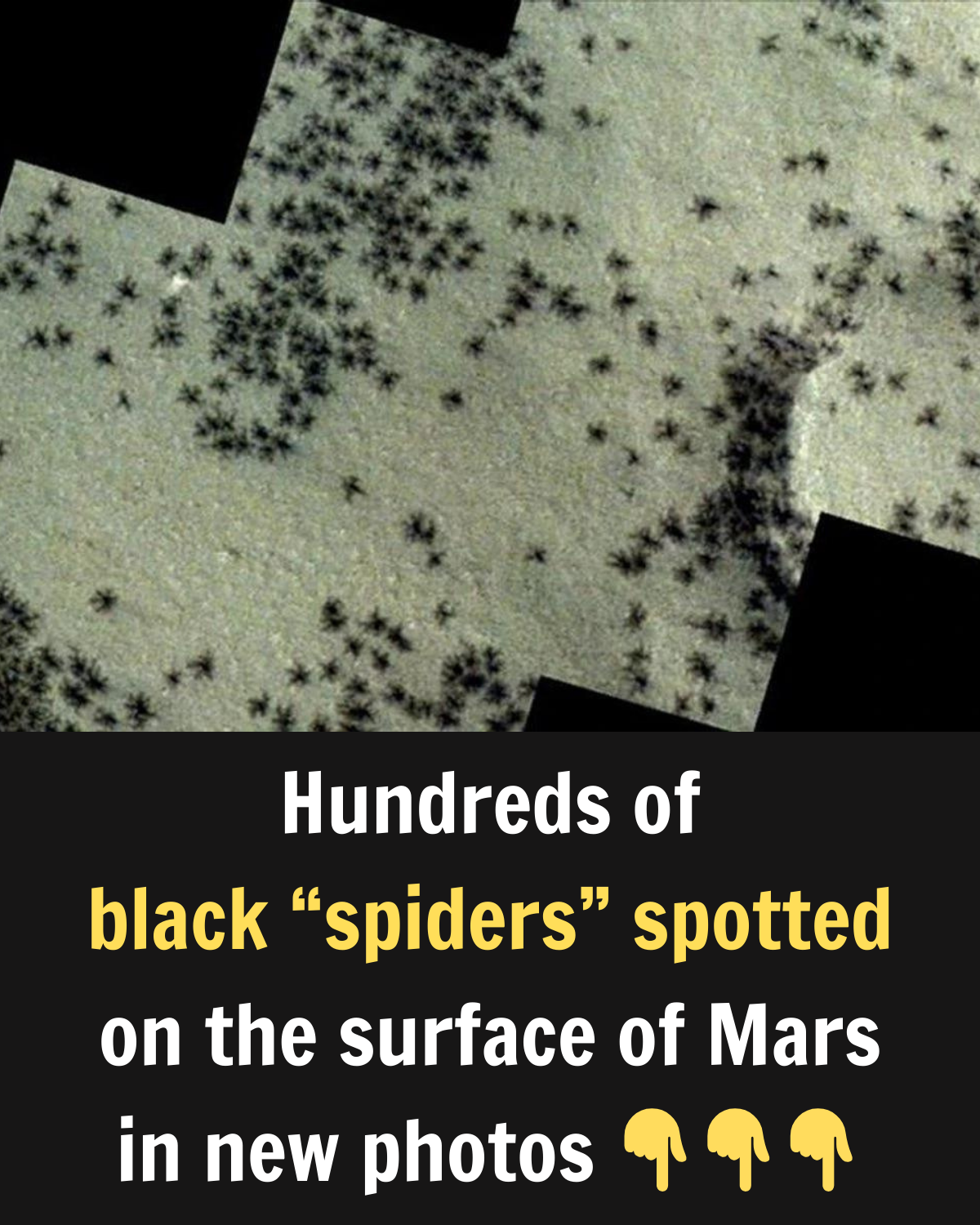
Images of what seemed to be ants or spiders crawling across Mars’ surface sparked widespread interest on social media. The European Space Agency (ESA), which posted the photographs online, clarified what they are.
The recently revealed photographs provided viewers with a glimpse of the Martian terrain and showed “spiders” spread across the southern polar area of Mars.
The ESA stated that their Mars Express caught photographs of the “spiders” and that they are not creepy crawlies of any type, but rather the result of carbon dioxide deposits.
The European Space Agency (ESA) shared images of what appeared to be hundreds of spiders crawling across the surface of Mars

The appearance of these “spiders” is unlike anything seen on Earth.
During the winter on Mars, carbon dioxide ice collects and forms a thin, frozen layer over the surface. When spring approaches, sunlight penetrates the frozen layer, causing a metamorphosis that gives the surface the appearance of spiders scuttling across the ground.
This phenomenon hasn’t been observed on Earth.
“Rather than being actual spiders, these small, dark features form when spring sunshine falls on layers of carbon dioxide deposited over the dark winter months,” the European Space Agency (ESA) said in a statement. “The sunshine converts carbon dioxide ice at the bottom of the layer to gas, which then accumulates and breaks through slabs of overlying ice.
“The gas bursts free in martian springtime, dragging dark material up to the surface as it goes and shattering layers of ice up to a metre thick,” a spokesperson for the space agency said.
Several satellite agencies have been striving for years to uncover the mysteries of life on Mars.

The gas, mingled with dark dust, explodes beneath the frozen surface and rises through fractures to form tall fountains or geysers. They then descend and rest on the ground, leaving dark spider-shaped marks.
ESA recently revealed photographs of black blotches on the edges of a region of Mars known as “Inca City,” so named because it resembles the Inca Ruins on Earth.
View this post on Instagram


















